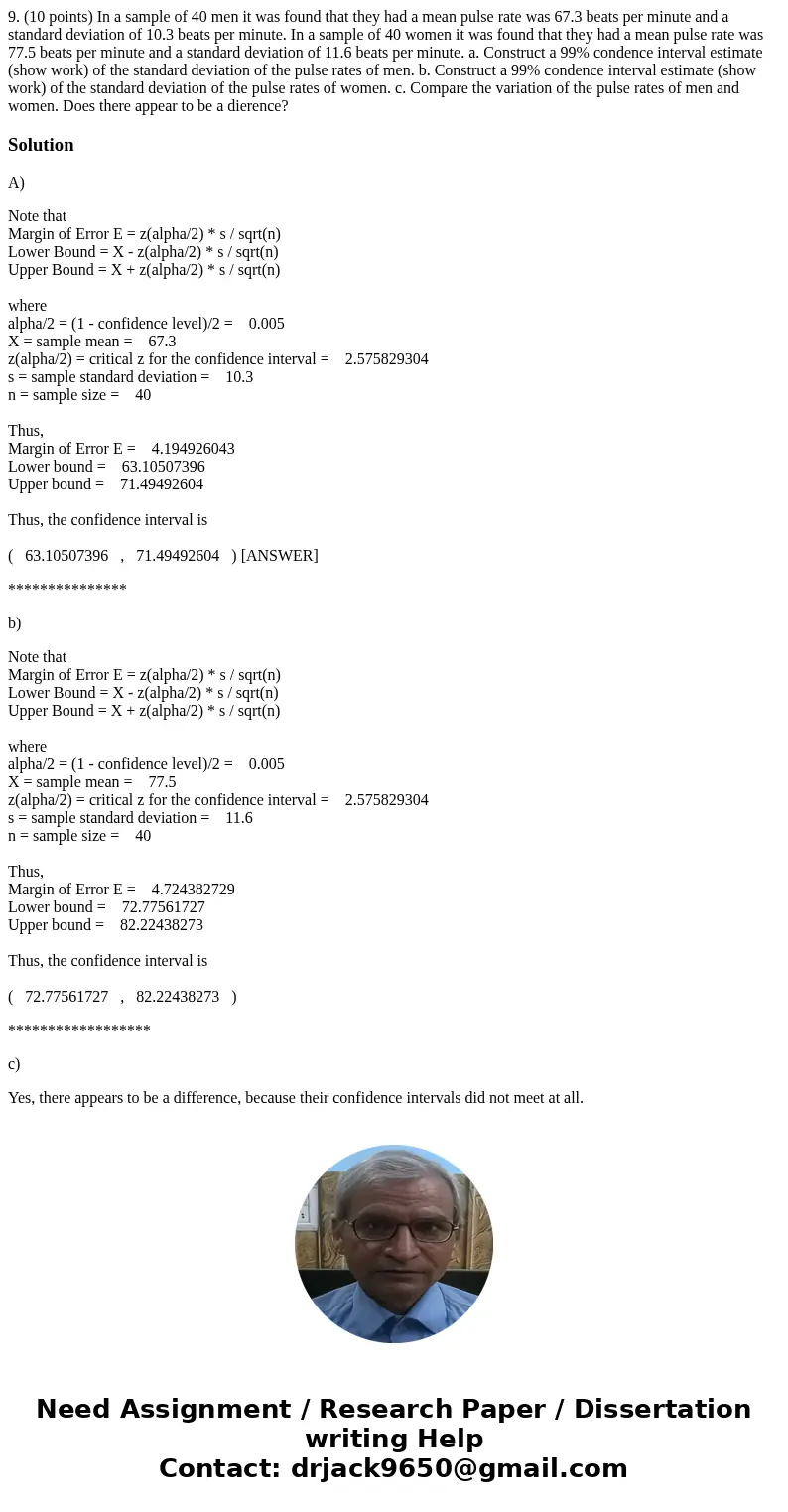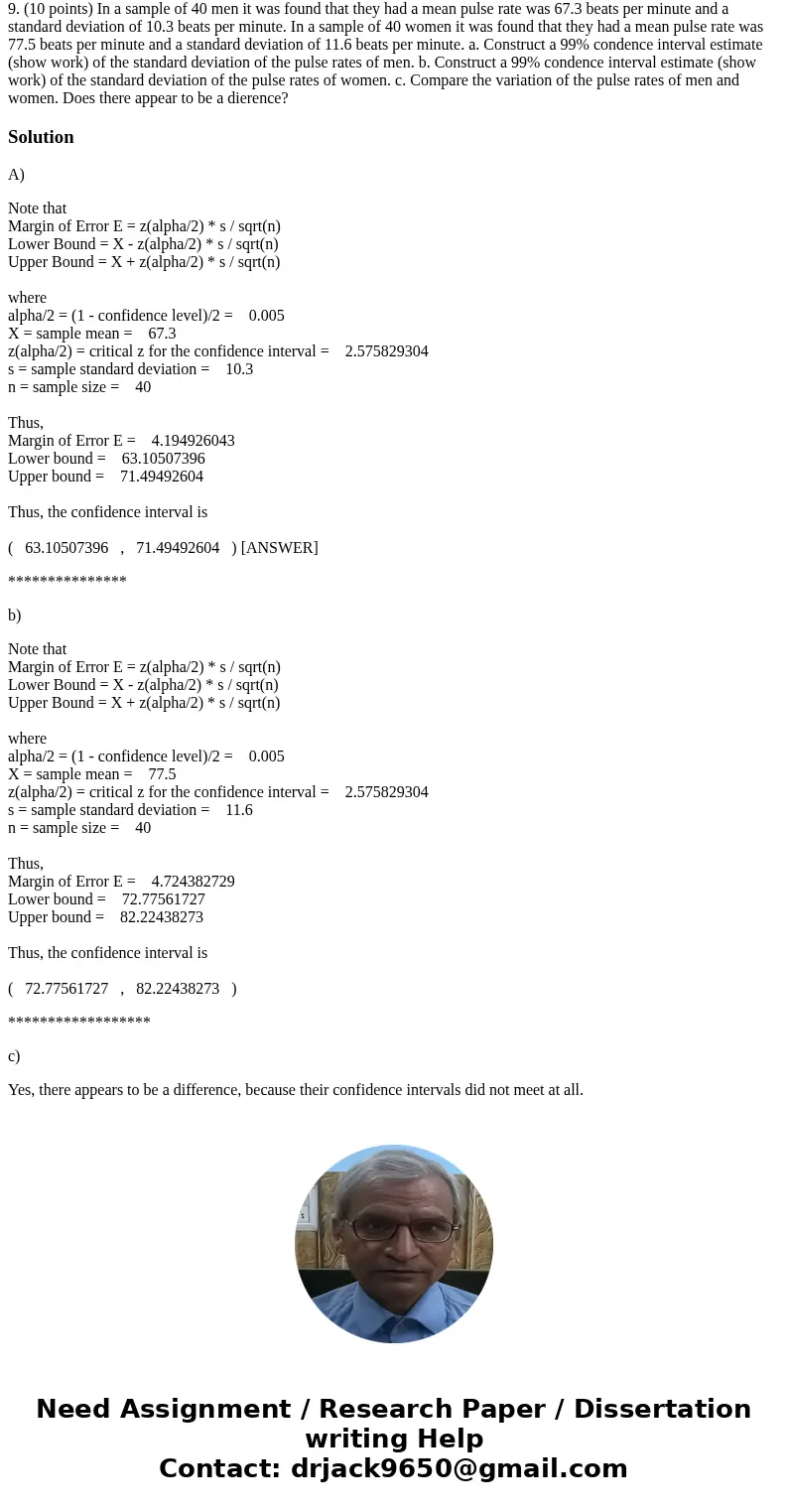9 10 points In a sample of 40 men it was found that they had
9. (10 points) In a sample of 40 men it was found that they had a mean pulse rate was 67.3 beats per minute and a standard deviation of 10.3 beats per minute. In a sample of 40 women it was found that they had a mean pulse rate was 77.5 beats per minute and a standard deviation of 11.6 beats per minute. a. Construct a 99% condence interval estimate (show work) of the standard deviation of the pulse rates of men. b. Construct a 99% condence interval estimate (show work) of the standard deviation of the pulse rates of women. c. Compare the variation of the pulse rates of men and women. Does there appear to be a dierence?
Solution
A)
Note that
Margin of Error E = z(alpha/2) * s / sqrt(n)
Lower Bound = X - z(alpha/2) * s / sqrt(n)
Upper Bound = X + z(alpha/2) * s / sqrt(n)
where
alpha/2 = (1 - confidence level)/2 = 0.005
X = sample mean = 67.3
z(alpha/2) = critical z for the confidence interval = 2.575829304
s = sample standard deviation = 10.3
n = sample size = 40
Thus,
Margin of Error E = 4.194926043
Lower bound = 63.10507396
Upper bound = 71.49492604
Thus, the confidence interval is
( 63.10507396 , 71.49492604 ) [ANSWER]
***************
b)
Note that
Margin of Error E = z(alpha/2) * s / sqrt(n)
Lower Bound = X - z(alpha/2) * s / sqrt(n)
Upper Bound = X + z(alpha/2) * s / sqrt(n)
where
alpha/2 = (1 - confidence level)/2 = 0.005
X = sample mean = 77.5
z(alpha/2) = critical z for the confidence interval = 2.575829304
s = sample standard deviation = 11.6
n = sample size = 40
Thus,
Margin of Error E = 4.724382729
Lower bound = 72.77561727
Upper bound = 82.22438273
Thus, the confidence interval is
( 72.77561727 , 82.22438273 )
******************
c)
Yes, there appears to be a difference, because their confidence intervals did not meet at all.


 Homework Sourse
Homework Sourse